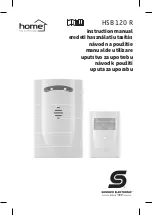
™
Page 9 of 67
2 vLoc3 RTK-Pro Receiver
2.6 Warnings
Warnings are displayed in real-time across the display as below:
61.4
32.8kHz
24dB
4G
2.6.1 Signal Overload
This a very unusual situation and is usually caused by operating
very
close to a power transformer or placing the
unit very close to a transmitter in the Induction mode. Moving slightly away from the interfering signal will cure the
problem. Signal overload will not cause damage to the instrument.
2.6.2 Shallow Cable
Real-time indicates that the locator has detected a cable that is possibly less than 15cm deep. Proceed with
caution.
2.6.3 Swing Alert
This indicates that the operator is swinging the locator excessively and could result in misleading information.
When sweeping the locator across the direction of the line, try to keep it vertical. This will improve accuracy.
2.6.4 Overhead cable
This indicates that the signal is mainly radiating from above. This is usually caused by the signal traveling along
overhead cables.
The warning symbols are accompanied by an audible sound and a vibration in the handle unless configured otherwise (See
MyLocator3). Warnings can also be switched off in the User Set-up Menu.
2.7 Setting up the vLoc3 RTK-Pro mapping functions
Introduction
This section describes the set-up and operation of the vLoc3 RTK-Pro in terms of the GNSS mapping capabilities.
The equipment is designed to provide cm accuracy. However, GNSS on its own is not capable of providing the cm accuracy that
is required for many survey applications. GNSS needs to be fine-tuned using stationary base stations that provide correction
figures for all measurements. The real-time Kinematic (RTK) corrections are supplied from a central server (Trip Caster) via the
cellular phone network and the Cloud.
















































